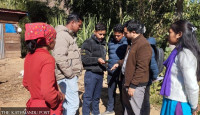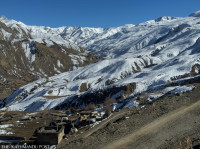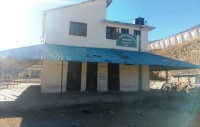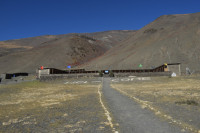Karnali Province
Quake victims in Salyan return to damaged houses
More than 500 families have gone back to their houses with cracks in three weeks, says Nim Bahadur KC, chair, Darma Rural Municipality.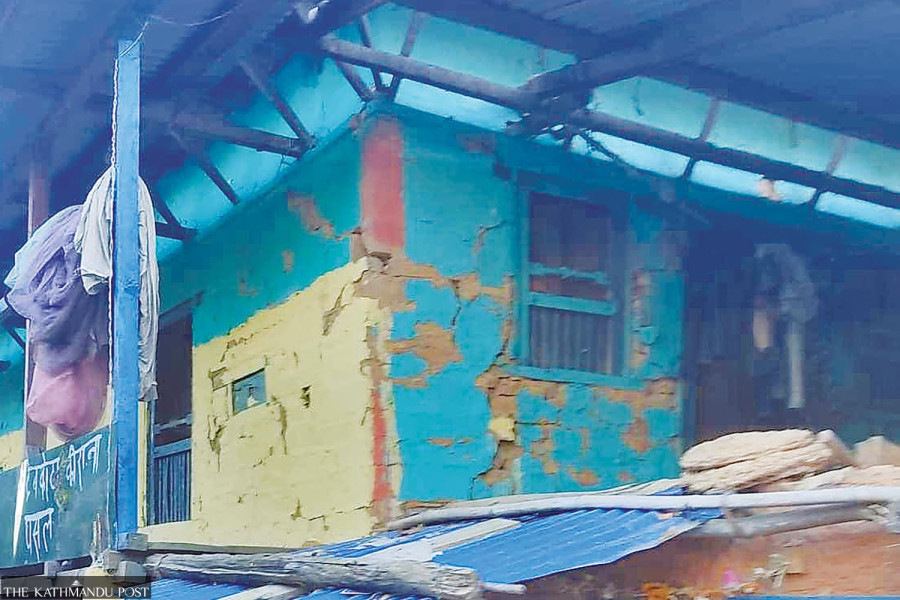
Biplab Maharjan
Five-member family of Mohan Damai, a resident of Darma Rural Municipality-2 in Salyan, returned to their earthquake-damaged house last week. Damai took the risk of staying in the house that developed cracks in the November 3 earthquake last year as the family members started falling ill due to cold in the flimsy temporary shelter.
“We stayed in the tin-roofed temporary shelter, which could not protect us from bone-chilling cold in winter. My children suffered from a common cold and pneumonia, possibly due to cold. We returned to the damaged house by taking risks as there was no alternative,” said Mohan, aged 45. He has a wife and three children.
“Earthquakes, though mild so far, frequently jolted the mid-western and far-western districts over the past few months. I know it is not safe to stay in a quake-damaged house. But we were forced to return to the damaged house to protect ourselves from the severe winter cold,” said Mohan. According to him, dew drops from the tin roofs and makes it very cold to stay in.

Bimala Oli’s family also shifted to the quake-ravaged stone and mud house in Darma-1 a few days ago. She said that she felt safer in the damaged house than in the poorly built temporary shelter. “It is very cold in the hut mainly during the night. We cannot stay inside due to smoke if fire is lit to keep ourselves warm inside. The temporary shelter is congested as well. We returned to the damaged house after minor repairs. At least it protects us from cold, storm and rain,” said Bimala.
Not only Mohan and Bimala but many quake-displaced families in Darma returned to their houses which are full of risk. The victims complained that they were compelled to return to the damaged houses as they suffered from various cold-related ailments while in temporary huts.
A total of 4,080 houses were damaged in the earthquake last year. Around 1,600 families had been staying under temporary shelters as their houses were declared unfit to live in. “More than 500 families have returned to their damaged houses over the past three weeks,” said Nim Bahadur KC, chairman of Darma Rural Municipality.
Temperatures started plummeting in Salyan, a hill district in Karnali Province, and surrounding areas from December second week. “Many people, mainly children and the elderly, staying in temporary shelters were taken ill due to cold. The earthquake-affected people are left in the lurch due to the government’s lack of urgency to rebuild the damaged houses,” said Nim Bahadur. “Some people built houses with their own efforts. Delayed reconstruction has hit the impoverished families hardest,” he added.
The federal government, according to the Temporary Housing Construction Grant Procedures for Earthquake Affected Households-2023, provides a total of Rs50,000 in two tranches to each displaced family whose house was completely or partially damaged and has become inhabitable. Many victims are yet to receive the second tranche of Rs25,000. They took loans to build temporary shelters but these huts cannot shield them from the cold.
Lack of proper shelter had made many people ill in winter. Yagya Bahadur Basnet, the health unit chief in Darma Rural Municipality, said cases of pneumonia, fever, asthma, and common cold are rising over the past few weeks.
The 6.4 magnitude earthquake hit Jajarkot, Rukum West and Salyan on November 3, 2023, damaging around 8,000 public and private houses. There have been at least 157 reported deaths from Jajarkot and Rukum West. According to Karnali Provincial Police in Surkhet, some 34,501 houses were destroyed in Jajarkot, the epicentre, 16,909 houses in Rukum West and 5,000 houses were destroyed in Salyan.
The condition of earthquake victims is no better in Jajarkot and Rukum West. Hundreds of quake victims returned to their partially damaged houses, risking their lives. They said they chose to return to the unsafe houses rather than suffer from cold. Last year, more than three dozen cold-related deaths were reported in the earthquake affected districts.




 10.12°C Kathmandu
10.12°C Kathmandu
